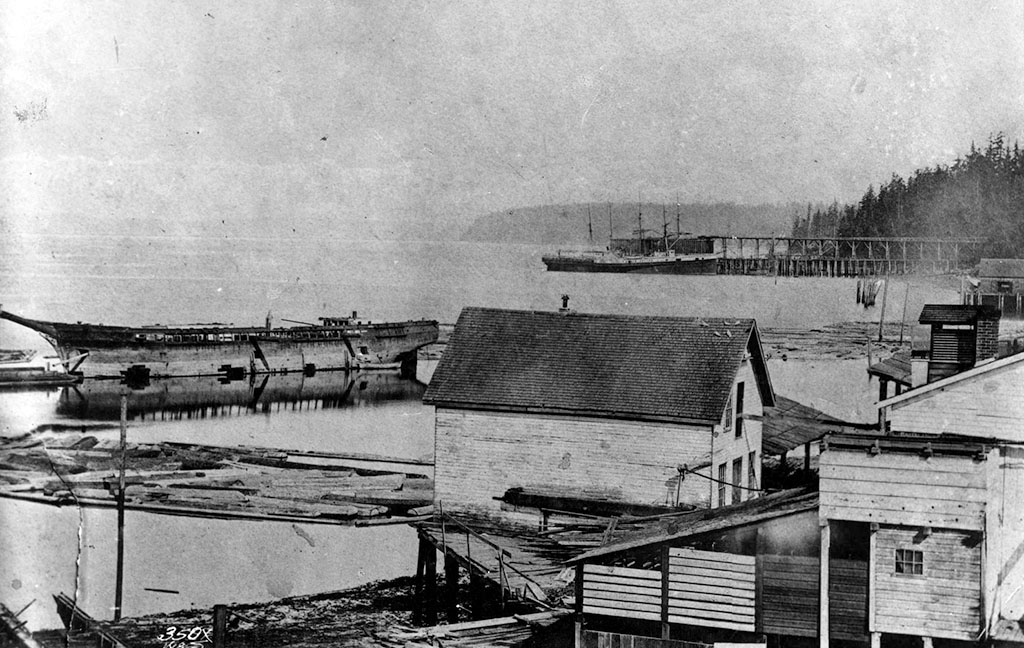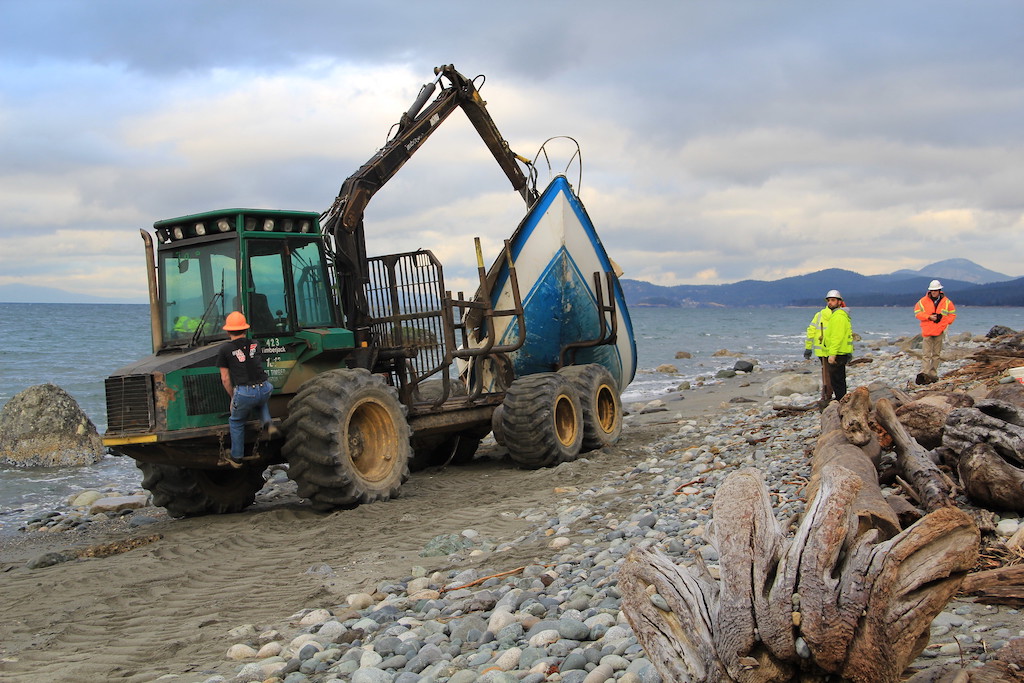Many of these contaminants, or persistent organic pollutants (POP), are lipophilic, which means they dissolve preferentially in fat. “If you imagine where fat is, it’s in living organisms,” says Jim West, a toxicologist with WDFW. Any animal that consumes another rich in POPs will concentrate, or bioaccumulate, the POPs in their fats. Numerous studies show that many Puget Sound marine species, such as Pacific herring and northern anchovies, suffer from ingesting POPs, which subsequently leads to further bioaccumulation in salmon and orca. Researchers have found that southern resident killer whales carry excessively “high concentrations of PCBs …and likely have rapidly increasing levels of PBDEs,” according to NOAA.
“The potential for vessels to contain toxic chemicals is high and when the derelict boats remain in the water it compels us to ask: What are the chemicals and how much of them are there?” West says. “Because it’s expensive to answer these questions, it creates uncertainty and risk that is hard to deal with. Why do we do this to ourselves? Prevention is by far the best way to protect fish and wildlife from toxic chemicals. Can’t we remove these derelict vessels and prevent new ones from sinking?”
Prevention is also at the core of where Wood hopes to move the program. Recently, he was able to ramp up the Vessel Turn-In Program, in which vessel owners can turn in their boats free of charge before they deteriorate. Prior to 2020, the state limited the VTIP to spending $200,000 per biennium. “We got rid of that cap…which really increase our ability to prevent these vessels from becoming abandoned and derelict.” says Wood. With money from HB 1700, he also plans to create large scale turn-in events across the state.
Since 2014, the state has had legislation requiring an inspection, to be filed with Wood’s office, for any boat prior to it being sold, which should reduce the number of boats sold cheaply so that the owner can simply unload the problem vessel. In 2020, they lowered the vessel criteria for the VTIP from 65 feet to 35 feet. The shorter boats typically stay in the water, as opposed to being hauled out, and are higher risk group.
Wood’s program is also implementing two additional changes. Working with Washington Sea Grant, they piloted a search for better ways to recycle the steel, aluminum, wood, and fiberglass instead of landfilling them. “It didn’t make sense to take a boat out of the water and throw it on the land,” says Wood.
They are also starting to provide more funding to local law enforcement. They found that increased contact between state officials and boat owners and better education work together to reduce the risk of an owner abandoning their vessel. The new funding comes through three annual $50,000 grants; they will be issued on July 1.
Combined with the expected increase in funding from HB 1700, the state’s Derelict Vessel Removal Program is set to achieve a long-term goal of Wood’s and many other stakeholders. “We always wanted more money because our funding in the past was barely enough to keep our head above water,” he says. “We can finally move from being reactive to being proactive. This money is a total gamechanger.”




